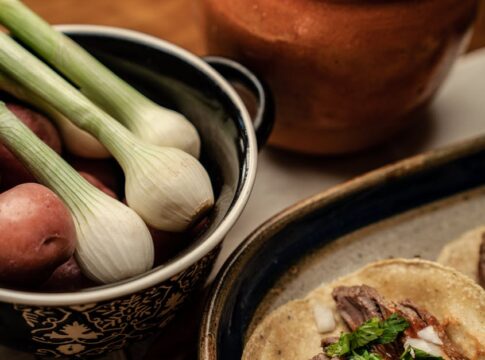⏱️ 5 min read
In October 1995, a groundbreaking moment in agricultural history occurred when potatoes became the first vegetable to be grown in space. This remarkable achievement aboard the Space Shuttle Columbia represented not just a scientific curiosity, but a crucial step toward long-term space exploration and the potential colonization of other planets. The humble potato, a staple food that has sustained civilizations on Earth for thousands of years, has now earned its place as a pioneer in extraterrestrial agriculture.
The Historic Space Potato Experiment
The potato cultivation experiment was conducted through a collaboration between NASA and the University of Wisconsin, Madison. Scientists used specialized technology developed by the university’s Center for Space Automation and Robotics to grow potato plants in a controlled environment aboard the spacecraft. The experiment utilized potato cuttings rather than seeds, as potatoes naturally propagate through their tubers, making them ideal candidates for space agriculture.
This wasn’t merely about proving that plants could survive in microgravity. The experiment aimed to understand how food crops could be cultivated in the harsh conditions of space, where factors like radiation, limited resources, and the absence of traditional soil-based growing methods present unique challenges. The success of this mission opened new possibilities for sustainable food production during extended space missions and potential Mars colonization efforts.
Why Potatoes Were Chosen for This Historic Mission
The selection of potatoes for the first space vegetable cultivation was far from arbitrary. Several characteristics made potatoes the optimal choice for this pioneering experiment:
- Nutritional density: Potatoes provide essential carbohydrates, vitamin C, potassium, and other vital nutrients that astronauts need
- High yield: Potatoes produce more food per unit of cultivation area compared to many other crops
- Versatility: They can be prepared in numerous ways and stored relatively easily
- Efficient propagation: Potatoes can be grown from tuber cuttings, eliminating the need for seeds
- Compact growth: Potato plants have a relatively manageable growth pattern suitable for confined spaces
The Technology Behind Space Agriculture
Growing vegetables in space requires sophisticated technology to replicate or replace Earth’s natural growing conditions. The potato experiment utilized a specially designed growth chamber that controlled every aspect of the plant’s environment. This included precise regulation of temperature, humidity, light exposure, and nutrient delivery.
Unlike traditional soil-based agriculture, the space potato experiment employed hydroponic and aeroponic systems. These methods deliver nutrients directly to the plant roots through water-based solutions or mist, eliminating the need for soil—a heavy and impractical medium for space travel. LED lighting systems provided the specific wavelengths of light needed for photosynthesis, while carefully engineered air circulation systems ensured proper gas exchange.
Implications for Future Space Exploration
The successful cultivation of potatoes in space has profound implications for the future of human space exploration. As space agencies worldwide plan extended missions to the Moon, Mars, and beyond, the ability to produce fresh food becomes not just desirable but essential. Carrying all necessary food supplies for multi-year missions would be prohibitively expensive and logistically challenging due to weight and storage limitations.
Fresh produce grown in space would provide astronauts with essential nutrients that degrade over time in pre-packaged foods. Additionally, tending to growing plants offers psychological benefits, providing crew members with purposeful activity and a connection to life during long periods of isolation in the sterile environment of spacecraft.
Advances Since the First Space Potato
Since that historic 1995 mission, space agriculture has continued to evolve rapidly. The International Space Station now features the Veggie plant growth system and the Advanced Plant Habitat, where astronauts have successfully grown lettuce, zinnia flowers, radishes, chile peppers, and various other crops. These experiments have expanded our understanding of how plants respond to microgravity and have refined the techniques necessary for space farming.
Recent experiments have focused on developing closed-loop life support systems where plants consume carbon dioxide produced by astronauts while generating oxygen and food. This symbiotic relationship could be crucial for establishing self-sustaining colonies on other planets.
The Potato’s Continued Role in Space Research
Potatoes remain a subject of ongoing research for space agriculture. Scientists at the International Potato Center in Lima, Peru, have collaborated with NASA to identify potato varieties that could potentially grow in Martian conditions. These experiments simulate the harsh environment of Mars, including its thin atmosphere, extreme temperatures, and unique soil composition.
Researchers have discovered that certain robust potato varieties can survive in conditions remarkably similar to those found on Mars, suggesting that future Martian colonists might indeed be able to cultivate this versatile crop on the Red Planet.
Lessons for Earth-Based Agriculture
The technologies and techniques developed for space agriculture have valuable applications on Earth as well. Controlled environment agriculture, vertical farming, and advanced hydroponic systems inspired by space research are helping address food security challenges in areas with limited arable land, water scarcity, or extreme climates. The efficiency and resource conservation required for space farming translate directly to more sustainable agricultural practices on our home planet.
The journey of the potato from ancient Andean staple to space pioneer illustrates humanity’s ingenuity and adaptability. As we continue to push the boundaries of exploration, this humble vegetable remains at the forefront of our efforts to sustain human life beyond Earth.

